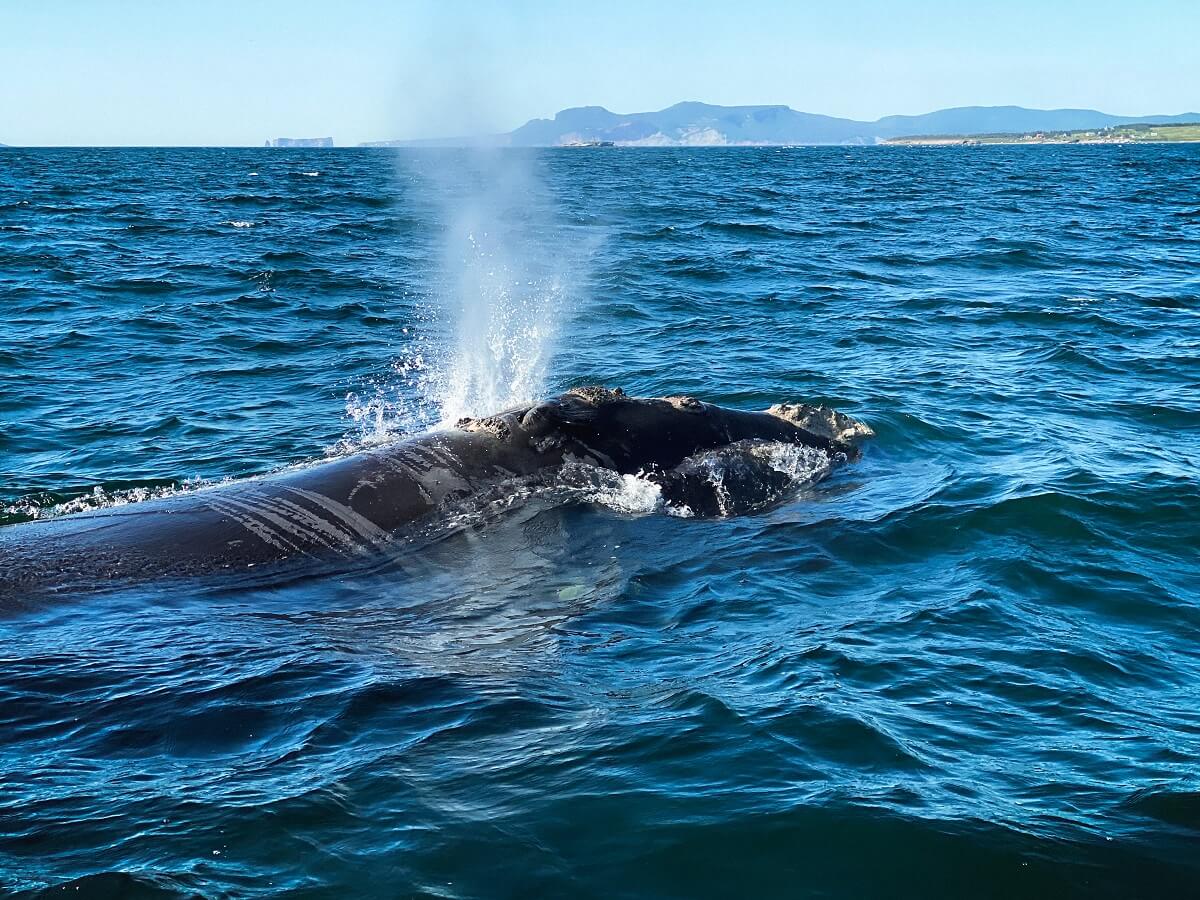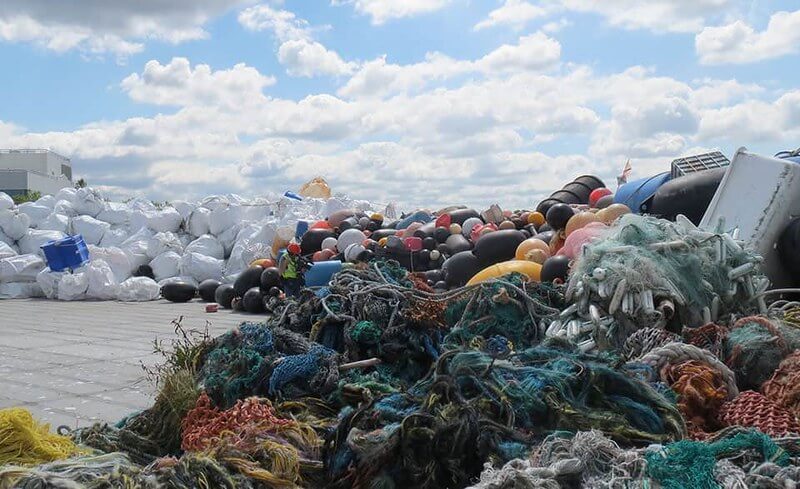On Thursday, March 10, Fisheries and Oceans Canada announced the protection measures that will be put in place this year to protect North Atlantic right whales in Canadian waters. Like last year, a number of regulations such as speed limits for vessels or the closure of certain seasonal fishing areas are on the menu. Whales Online outlines below a brief overview of the measures planned for 2022.
Giants with ‘feet of clay’
It is estimated that there are currently fewer than 360 North Atlantic right whales left in the world. Since 2017, this species has been experiencing what is called an “extraordinary mortality event,” with 34 carcasses discovered over a five-year period. In other words, the high number of carcasses found each year and low birth rates within the population seriously threaten the species’ survival. These whales are therefore highly vulnerable and are being closely monitored.
The main risks faced by North Atlantic right whales are ship strikes and entanglements in fishing gear. This is why government authorities such as Transport Canada and Fisheries and Oceans Canada are mobilizing to limit the number of incidents related to these issues. This mobilization seems to be bearing fruit: since 2020, no right whale death has been reported in Canadian waters, and just one or two entanglements.
Better cohabitation with fishers
Once again this year, many of the protection measures for 2022 will concern the fishing industry. Any time a right whale is visually or acoustically detected in the Gulf of St. Lawrence or in the Bay of Fundy, local closures will occur in seasonal and temporary fishing areas. More specifically, once a whale is spotted, an area of approximately 2000 km2 around the point of detection will be closed to non-tended fixed gear, including lobster and crab traps, for 15 days. This closure will be extended if the whale is still present during days 9 through 15 after the initial report. However, these measures will not apply to waters that are less than 20 fathoms deep, since right whales do not usually venture into such shallow areas.
Additionally, Fisheries and Oceans Canada will once again continue operations this year in an effort to tackle the issue of ghost gear in the Gulf of St. Lawrence. The federal agency has also announced that it wants to help fishers gradually switch to whale-safe fishing gear by 2023.
Slowing down to avoid collisions
Once again this season, vessels over 13 metres long will be subject to a maximum fixed speed limit of 10 knots, from April 20 through November 15, 2022, in an expansive ‘static’ zone, meaning speed limits must be observed at all times. Smaller vessels will also be requested to respect this speed limit, though on a voluntary basis.
‘Dynamic’ maritime transport zones will also be reinstated this year. In these areas, speed limits will only apply if and when a right whale is detected. These zones will again be located north and south of Anticosti Island and, as with the static zones, transiting vessels must respect a maximum speed of 10 knots. Like last year, all commercial fishing vessels will be exempt from the speed limit in waters of less than 20 fathoms.
The Cabot Strait will remain a voluntary speed reduction zone. However, as revealed by a report published by the organization Oceana, most of the ships using this channel did not respect the voluntary speed restrictions last year, which begs the question of how relevant this measure actually is.
Any watercraft violating the mandatory speed limits could be subject to fines of up to $250,000, depending on the circumstances. In 2021, just four such fines were issued for a total of $136,000.
Surveillance by sea and by air
In order to implement the dynamic closure and speed limit measures, a wide range of surveillance activities will be carried out throughout the season. At sea, for a third consecutive year, the use of underwater gliders and hydrophones will be used to detect in near real time the presence of North Atlantic right whales in the Gulf of St. Lawrence. Following validation by a team of experts, the detections will then be displayed on the St. Lawrence Global Observatory’s Viking buoy detection portal and on WhaleMap.
Coast Guard vessels and aircraft will be tasked with visually monitoring the surface and reporting sightings of right whales in Atlantic Canadian waters and the Gulf of St. Lawrence.
Are you concerned about the fate of these vulnerable giants? Throughout 2022, follow all the latest right whale news thanks to our special coverage of the topic.









